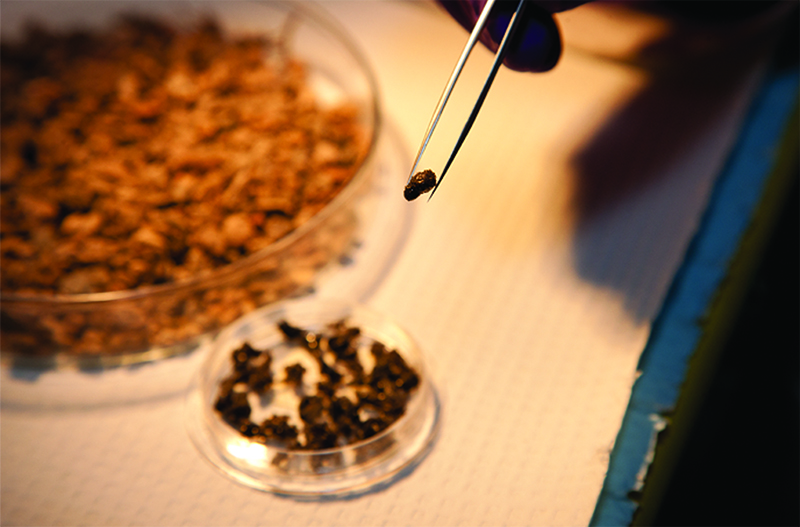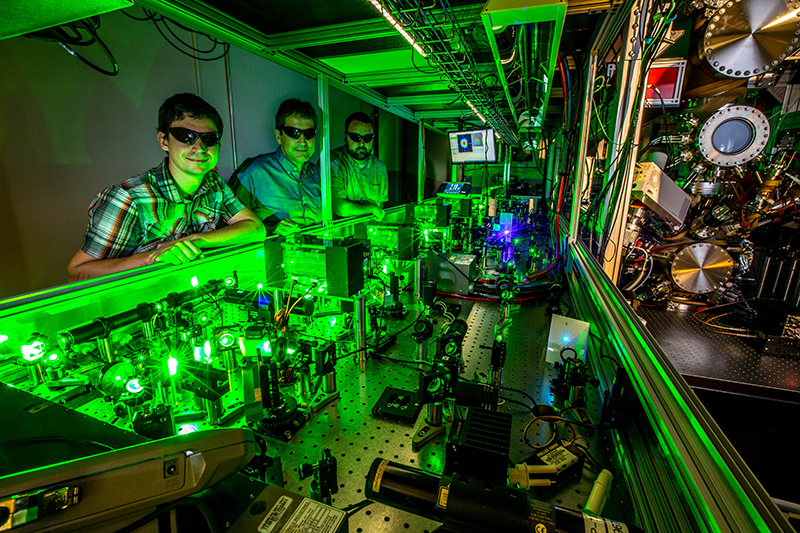LLNL scientists are leaders in nuclear forensics—the chemical, isotopic, and morphological analysis of nuclear and radiological materials for signature attribution and age dating.
Nuclear forensics and cosmochemistry research
The radioactive decay of isotopes of certain elements provides scientists with a powerful tool—the ability to measure the age of a material, from months to billions of years old. By measuring the abundances of parent and daughter isotopes in rocks and minerals with extremely accurate mass spectrometers, LLNL scientists can determine the age of planetary and meteoritic materials with a margin of error of less than 1 percent. This gives us a timeline for important events, such as when the solar system was born and when the moon formed.
At LLNL, these analytical techniques serve a dual role, supporting both cosmochemistry research and nuclear forensics activities. Nuclear forensics is central to the Laboratory’s security missions, and cosmochemistry work is key to developing state-of-the-art mass spectrometry techniques used in nuclear forensics, such as constraining the origins of illicit nuclear materials.
Exercises hone forensics skills
LLNL researchers hone their forensics skills through joint exercises involving other laboratories (both within the U.S. and around the world) to respond to simulated interdictions and events. During these exercises, LLNL plays leading roles in sample analysis, data interpretation, and the design of materials for exercises. Drawing on the Laboratory’s experience analyzing historical nuclear test debris, in 2011, LLNL’s nuclear chemists started using a curated selection of fuels, fission products, and activation products to design and synthesize realistic debris simulants to enhance these exercises.
Novel forensics technology
LLNL nuclear forensics scientists both use and invent new technologies to trace nuclear materials. Using techniques pioneered at the Laboratory, the laser ionization of neutrals (LION) facility can quickly analyze nuclear material and provide critical information to help investigators determine its origin and intended use. LION uses resonance ionization mass spectrometry (RIMS)—lasers tuned to unique resonant frequencies that quickly and selectively ionize the atoms of a particular element of interest—to measure the isotopic compositions of uranium, plutonium, and other elements. Within hours, and consuming only tiny quantities of material, RIMS can provide authorities with a read on whether an interdicted material was manufactured for use in a nuclear reactor or a weapon, or if it was repurposed for weapons from reactors—details that can provide the first clues to its origin and intended use.
Learn more about nuclear forensics research at LLNL
LION Hunts for Nuclear Forensics Clues, Science & Technology Review magazine, January/February 2017
Promoting International Security through Nuclear Forensics, Science & Technology Review magazine, October/November 2014
An Improved Tool for Nuclear Forensics, Science & Technology Review magazine, April/May 2012
Quickly Identifying Viable Pathogens from the Environment, Science & Technology Review magazine, September 2010
Identifying the Source of Stolen Nuclear Materials, Science & Technology Review magazine, January/February 2007
Decoding the Origin of a Bioagent, Science & Technology Review magazine, September 2006






